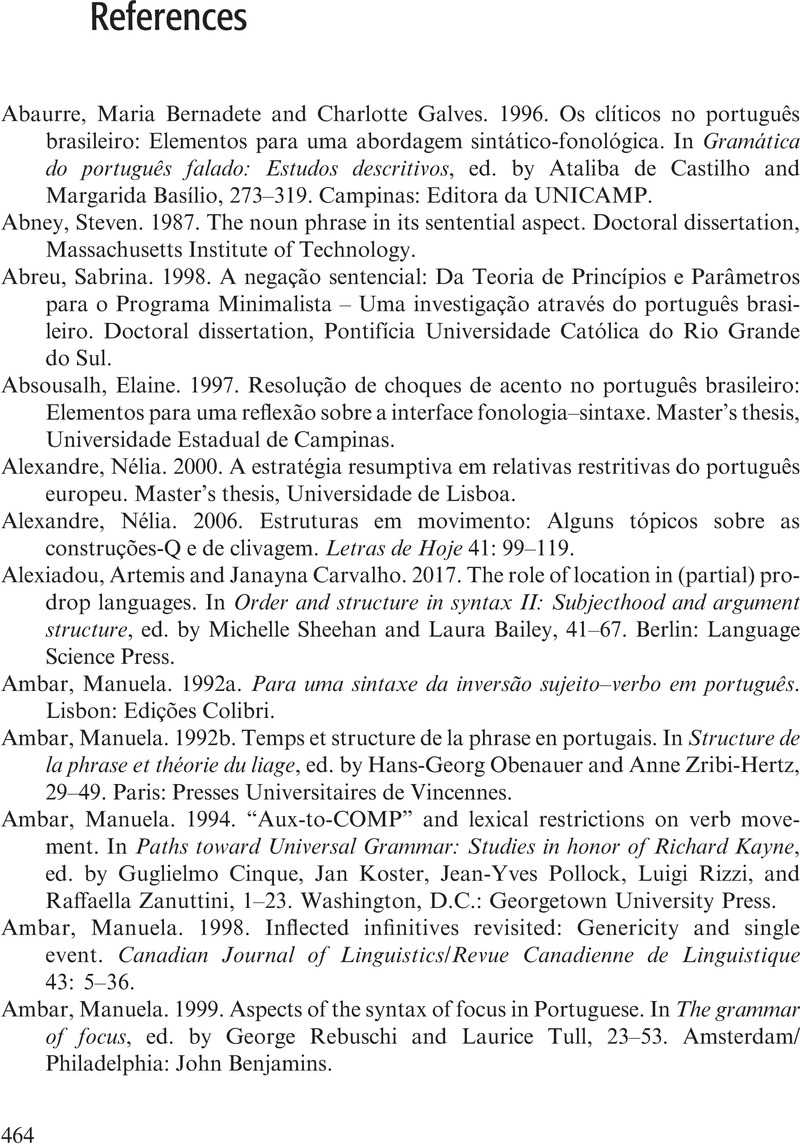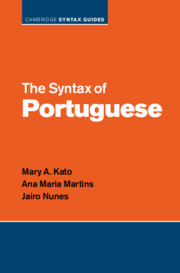Book contents
- The Syntax of Portuguese
- Cambridge Syntax Guides
- The Syntax of Portuguese
- Copyright page
- Contents
- Tables
- Acknowledgments
- Abbreviations
- 1 Introduction
- 2 The Pronominal System
- 3 Agreement
- 4 Null Subjects
- 5 Word Order
- 6 Null Objects and Null Possessors
- 7 Affirmation, Negation, and yes/no Questions and Answers
- 8 Conclusion
- References
- Corpora
- Index
- References
References
Published online by Cambridge University Press: 30 March 2023
- The Syntax of Portuguese
- Cambridge Syntax Guides
- The Syntax of Portuguese
- Copyright page
- Contents
- Tables
- Acknowledgments
- Abbreviations
- 1 Introduction
- 2 The Pronominal System
- 3 Agreement
- 4 Null Subjects
- 5 Word Order
- 6 Null Objects and Null Possessors
- 7 Affirmation, Negation, and yes/no Questions and Answers
- 8 Conclusion
- References
- Corpora
- Index
- References
Summary

- Type
- Chapter
- Information
- The Syntax of Portuguese , pp. 464 - 500Publisher: Cambridge University PressPrint publication year: 2023

